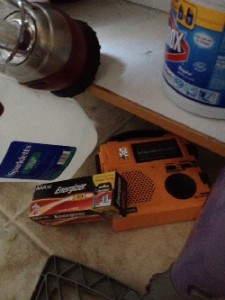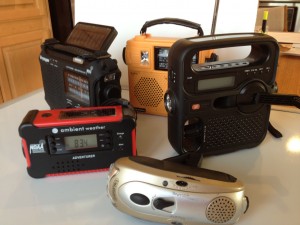Use sunlight for emergency power

The power outages I wrote about last week never materialized. The weather has cooled down a few degrees, too, and that has taken the edge off the power discussion. Still, the whole episode took me back to capturing sunlight for emergency power – via a portable solar system.
A couple of years ago I bought a small fold-open solar panel, advertised as a source of emergency power for my cellphone. I put it together then, but it has sat on the shelf for a while now, unused.
Time to get back to being ready!
Since then, there have been improvements on this basic set-up. Panels have become more efficient. Power controllers connect the panels to more types of devices. Handy fasteners have been added on all sides.
The purpose remains the same, however. And I still really like it! Set it up in the sunshine, strap it to your backpack on a hike – let it charge your phone “for free!”
Over this same period, I’ve also become more aware of just what solar can do, and what it can’t. If you haven’t really had the chance to learn about solar (yet),
Here are some very basic solar basics.
- Solar panels capture photons of light and convert them to electric power.
- The power coming from a solar panel is Direct Current (DC). If a gadget uses battery power, it can use the current from a solar panel. (If a gadget needs to be plugged into an electric socket, it is using Alternating Current (AC). Solar panels can’t directly power your AC appliances.)
- When the sun stops shining on the panels, the electricity stops.
To summarize so far, if your emergency takes place during the day, your solar panels may be useful. If it continues into the night, the panels will be useless.
What do you do for power when the sun isn’t shining?
Since real emergencies are not conveniently scheduled, you may want to add a way to STORE some of the electricity that is created during the day. And that’s where solar batteries come in.
The manufacturer of my own mini solar-system also offers batteries to extend the usefulness of the system. I have a small battery pack that is charged with the solar panels. This small storage unit is called a “power bank.” (I have other power banks, too, made by other manufacturers. You can read more about power banks here.)
I charge the power bank using the panels, then, at night, I can use the stored power to charge my phone and its flashlight, etc.
If you’ve thought about how you would manage after days without power, when your phone and your computer’s batteries are dead, having the ability to recharge them using solar may sound attractive! It certainly does to me.
Another short summary about this technology . . .
- Solar panels are one thing. Solar-powered storage batteries are a separate item. Each has its own capacity, requires its own connectors depending on what equipment you want to run, and each has its own cost.
- It takes a lot of solar power to drive big appliances.
- If you are considering solar for emergency communications needs, you need to start with only the essentials, and then buy sufficient panel and battery capacity to meet your needs.
Here’s the current kit at Amazon – the panels plus the power bank, exactly as I have it. As you can imagine, there are other larger versions – take a close look to be sure the portable solar kit will charge the devices YOU have.
Click on the image to get current pricing. (Remember, I am an affiliate at Amazon and may get a commission if you buy through this link. Thanks for supporting my work and helping spread the word about preparedness!)

This technology makes a great Christmas present, by the way. It’s never too early to start making your list!
Virginia
Your Emergency Plan Guide team
Day 31 of Summer Vacation. The last day of this special effort to provide you with some shorter and lighter Advisories as a change of pace. Hope you have enjoyed them — and welcome to some of my new Summer Vacation readers!






